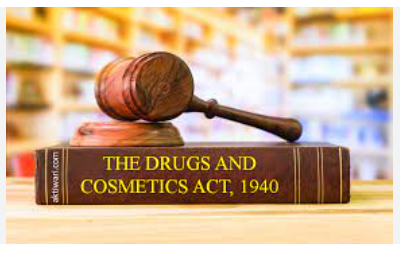Drugs and Cosmetics Act 1940
The Drugs and Cosmetics Act, 1940 is a comprehensive legislation enacted by the Indian Parliament to regulate the import, manufacture, distribution, and sale of drugs and cosmetics in India. The primary objective of the Act is to ensure the safety, quality, and efficacy of drugs and cosmetics available in the country, thereby protecting public health and well-being.
History and Background
The Drugs and Cosmetics Act, 1940 was passed by the Parliament on 10 April 1940 and came into effect on 1 April 1947. The Act was introduced in response to the growing concerns over the quality and safety of drugs and cosmetics in India during the pre-independence era. The Act replaced the earlier Drugs Act of 1906, which was found to be inadequate in addressing the challenges posed by the expanding pharmaceutical industry.
Key Provisions of the Act
The Drugs and Cosmetics Act, 1940 covers various aspects of drug and cosmetic regulation in India. Some of the key provisions of the Act include:
- Licensing and Registration: The Act mandates that all manufacturers, importers, and sellers of drugs and cosmetics must obtain the necessary licenses from the Central Drugs Standard Control Organisation (CDSCO) or the State Drug Control Authorities.
- Standards and Quality Control: The Act empowers the Central Government to set standards for the quality, safety, and efficacy of drugs and cosmetics. The Indian Pharmacopoeia (IP) and the National Formulary of India (NFI) are recognized as the official standards for drugs in India.
- Prohibition of Misbranded, Adulterated, and Spurious Drugs: The Act strictly prohibits the manufacture, sale, and distribution of misbranded, adulterated, and spurious drugs and cosmetics. Penalties for offenses related to such products include imprisonment and fines.
- Clinical Trials: The Act regulates the conduct of clinical trials for new drugs and medical devices in India. It mandates that all clinical trials must be approved by the CDSCO and must adhere to the ethical guidelines and standards prescribed by the Indian Council of Medical Research (ICMR).
- Advertising and Promotion: The Act regulates the advertising and promotion of drugs and cosmetics in India. It prohibits false or misleading advertisements and promotions that exaggerate the efficacy or safety of the products.
Amendments and Rules
Since its enactment, the Drugs and Cosmetics Act, 1940 has undergone several amendments to keep pace with the evolving pharmaceutical and cosmetic industries. Some of the significant amendments include:
- The Drugs (Amendment) Act, 1955
- The Drugs and Cosmetics (Amendment) Act, 1960
- The Drugs and Cosmetics (Amendment) Act, 1982
- The Drugs and Cosmetics (Amendment) Act, 2008
In addition to the amendments, the Act is supplemented by the Drugs and Cosmetics Rules, 1945, which provide detailed guidelines and procedures for the implementation of the Act.
Regulatory Authorities
The implementation and enforcement of the Drugs and Cosmetics Act, 1940 are carried out by the following regulatory authorities:
- Central Drugs Standard Control Organisation (CDSCO): The CDSCO is the national regulatory authority responsible for the approval, licensing, and quality control of drugs and cosmetics in India. It functions under the Directorate General of Health Services, Ministry of Health and Family Welfare.
- State Drug Control Authorities: Each state in India has its own Drug Control Authority, which is responsible for the licensing, inspection, and enforcement of the Act within the states jurisdiction.
- Indian Pharmacopoeia Commission (IPC): The IPC is responsible for the preparation and publication of the Indian Pharmacopoeia, which sets the standards for drugs in India.
Impact and Significance
The Drugs and Cosmetics Act, 1940 has played a crucial role in ensuring the safety, quality, and efficacy of drugs and cosmetics in India. The Act has helped in:
- Preventing the manufacture and sale of substandard, misbranded, and adulterated drugs and cosmetics
- Protecting consumer health and well-being
- Promoting the growth of the pharmaceutical and cosmetic industries in India
- Aligning Indian regulations with international standards
However, the Act has also faced challenges, such as the need for more stringent enforcement, addressing the issue of spurious drugs, and keeping pace with the rapidly evolving pharmaceutical and cosmetic industries.


